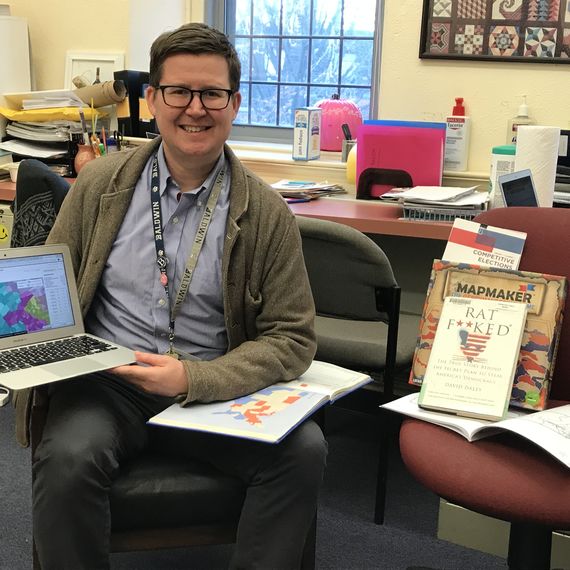Athan Biss (Bryn Mawr) - 2nd Place (tied), Statewide Adult

About Athan: I teach U.S. History and Politics at the Baldwin School in Bryn Mawr. Before moving to PA's 5th Congressional District, I lived in Madison, Wisconsin and grew up in Albany, NY. I am the proud father of two feisty daughters.
Judges' statement
Athan was DTL’s most prolific mapper in the adult category this round. In a separate map, we were intrigued to see that he came this close to our first-ever valid map with 3 majority-minority districts. (Almost all PA maps have 1 or 2.) This winning map had one of the state’s most outstanding population equivalence scores and his essay is a thoughtful note on the trade-offs required to make a map. We're glad this thoughtful citizen will be teaching his students at Baldwin School about gerrymandering this spring and helping them to compete in Draw the Lines.

Personal statement
"If men were angels, no government would be necessary. If angels were to govern men, neither external nor internal controls on government would be necessary." --James Madison, Federalist No. 51.
Before moving to Bryn Mawr in 2017, I lived in Wisconsin for 10 years and therefore felt I knew a thing or two about gerrymandering. Before drawing my own map, I felt reasonably confident that I could do better than the egregiously partisan borders and sometimes comical boundaries struck down by recent court rulings.
After attempting and abandoning several practice maps, I finally produced a constitutionally viable map, but I hesitate to call it a success. Guided by my desire to optimize population equivalence, I created some monstrously shaped districts including District 16, which I dubbed "Woodpecker Seahorse."
I was also forced to break single counties into multiple districts, violating the principle that redistricting should seek to preserve existing political communities. I also sacrificed compact districts in my single-minded quest to get the population as close to 747,199 as possible.
My secondary goal was to make the map more competitive. I was able to meet my goal to create a map in which more than half of the districts fulfilled the criteria as competitive. Even though I achieved my main objectives, I cannot in good conscience recommend my map.
Rather than feeling defeated by the contest, however, I am grateful for the abject lesson in the hard reality of compromise and the impossibility of producing a "flawless" map.
I am excited to have my students take up the challenge in the spring when I launch my one-week "Math, Maps, and Democracy" intensive interdisciplinary course at the Baldwin School.
So often my students expects problems to have a single right solution. What I love about the Draw the Lines mapping exercise is that it not only demonstrates how a problem can have multiple solutions, but that each solution contains its own problems.
My experience redrawing Pennsylvania's congressional districts has convinced me that redistricting must be taken out of the hands of political operatives. To paraphrase James Madison's memorable quip from Federalist No. 51, if mapmakers were angels, there would be no need for an independent redistricting commission.
The sophistication of GIS mapping software has handed partisan gerrymanders a powerful weapon, but organizations like Draw the Lines have offered citizens a way to fight back. Thank you for the chance to be part of the solution.